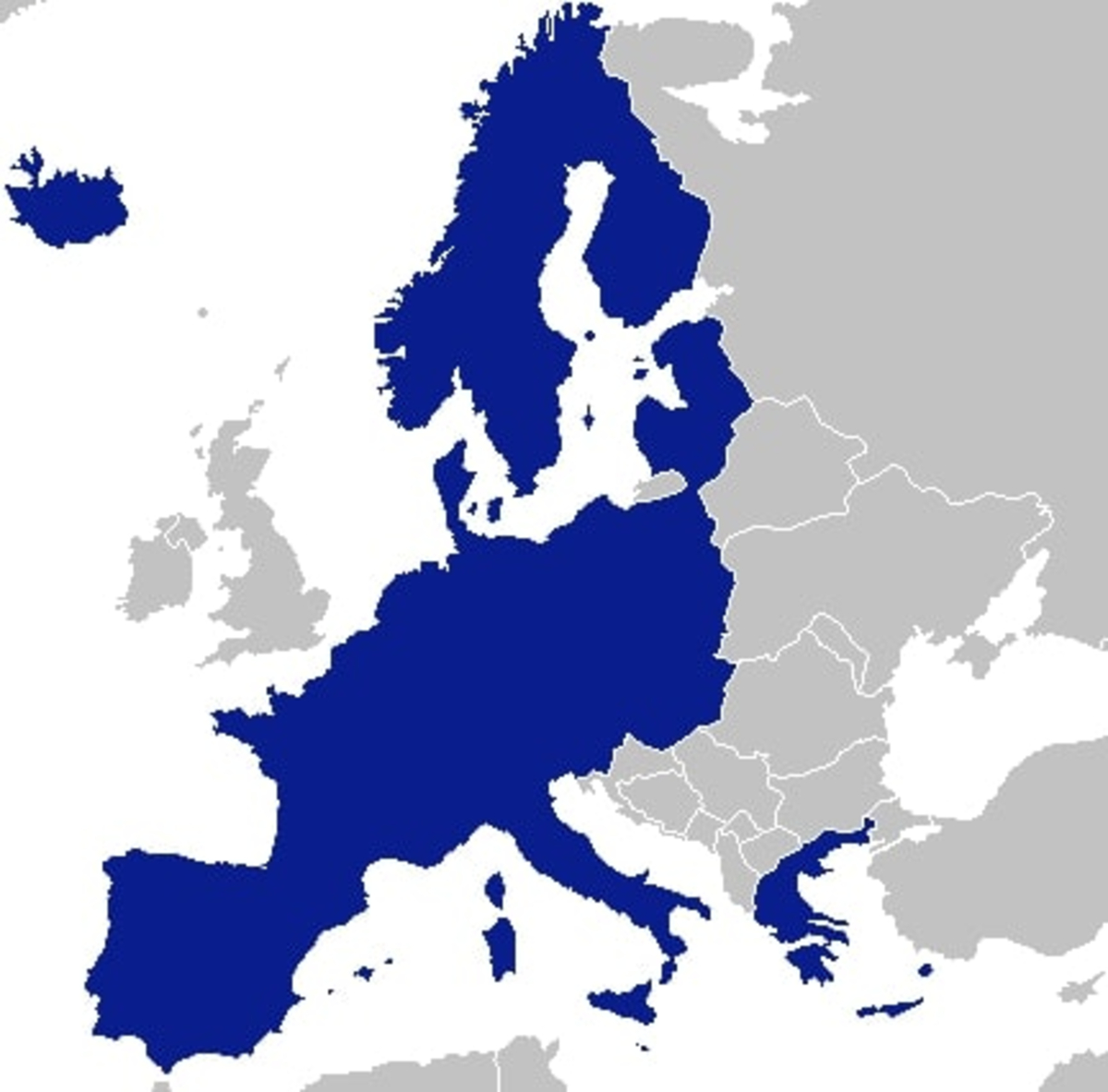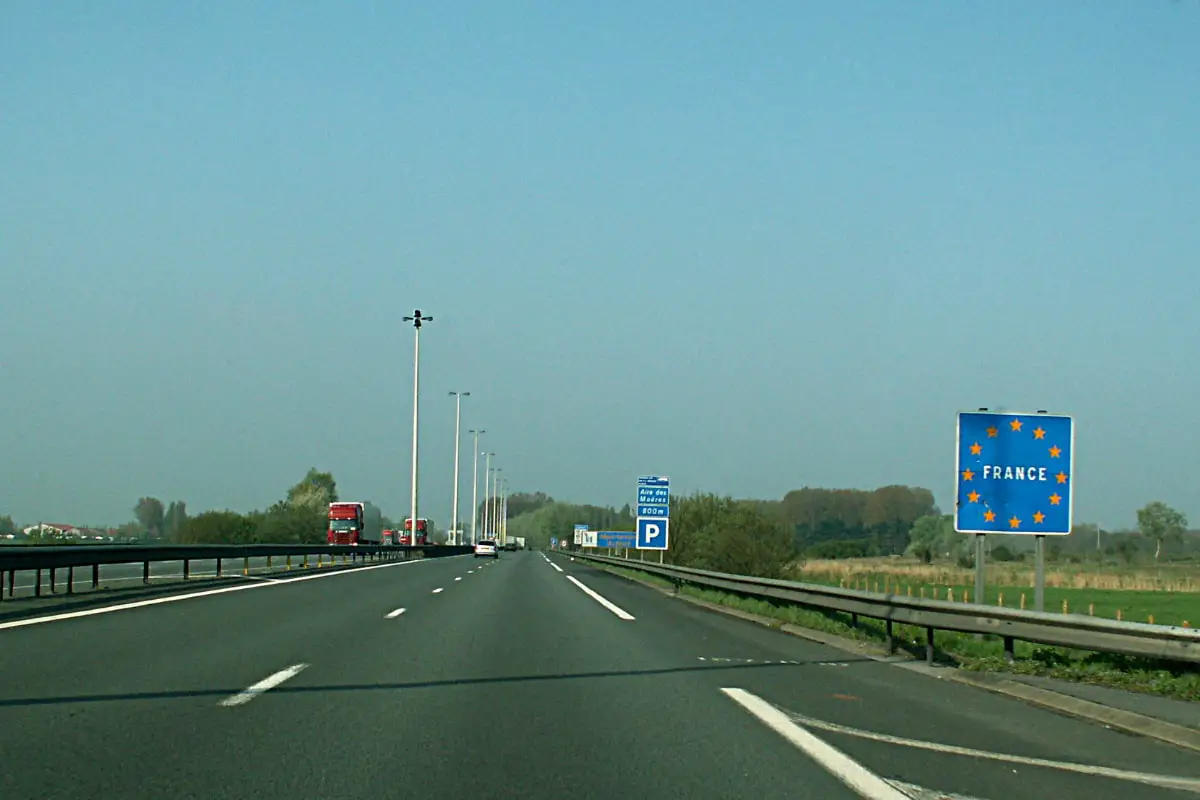In this post, we’ll explain what Europe’s Schengen Area is and how it works in practice. It should you give an idea of what your rights are for travelling and potentially working remotely in the region and how long you can stay within it. It includes a summary of the Schengen visa rules with examples of how the 90/180 day system works.
Table of Contents
What is the Schengen Area?
Background & Basics
First established in 1995, the Schengen Area is essentially an agreement between 26 European countries to abolish border controls between members and have a common visa policy for anyone arriving from outside the zone. To all intents and purposes, the Schengen Area takes the form of one large state or jurisdiction when it comes to international travel.
If you are from a Schengen nation then unless there are exceptional circumstances (such as the start of the pandemic in Spring 2020) you can travel freely within the area without any restrictions and without needing to pass through any border posts.
If you are from outside the area, then instead of checking the entry requirements for the individual countries you plan to visit, you just need to adhere to the common Schengen Area entry requirements. The only border controls you will need to formally pass through will be when you enter and leave the Schengen Area.
Schengen Countries

The following countries are members of the Schengen Area as of November 2020:
| Country | Schengen Area | EU | Euro (€) |
| Austria | Yes | Yes | Yes |
| Belgium | Yes | Yes | Yes |
| Czech Republic | Yes | Yes | No |
| Denmark | Yes | Yes | No |
| Estonia | Yes | Yes | Yes |
| Finland | Yes | Yes | Yes |
| France | Yes | Yes | Yes |
| Germany | Yes | Yes | Yes |
| Greece | Yes | Yes | Yes |
| Hungary | Yes | Yes | No |
| Iceland | Yes | No | No |
| Italy | Yes | Yes | Yes |
| Latvia | Yes | Yes | Yes |
| Liechtenstein | Yes | No | No |
| Lithuania | Yes | Yes | Yes |
| Luxembourg | Yes | Yes | Yes |
| Malta | Yes | Yes | Yes |
| Netherlands | Yes | Yes | Yes |
| Norway | Yes | No | No |
| Poland | Yes | Yes | No |
| Portugal | Yes | Yes | Yes |
| Slovakia | Yes | Yes | Yes |
| Slovenia | Yes | Yes | Yes |
| Spain | Yes | Yes | Yes |
| Sweden | Yes | Yes | No |
| Switzerland | Yes | No | No |
In addition, the microstates of Monaco, Vatican City and San Marino, which are not formally members of the Schengen Area, also have open borders with the countries listed above.
Note that not all Schengen members are also EU states and not all EU members are in the Schengen Area. Therefore it’s important to make this distinction as the EU and Schengen Area are not the same.
The Republic of Ireland for example is in the EU but is not in the Schengen Area meaning it has its own entry/exit requirements and an independent visa policy. Therefore you will need to go through passport control when entering Ireland, even if you are coming from another EU country.
Iceland, Switzerland, Liechtenstein and Norway meanwhile are not in the EU but are members of the Schengen Area.
It’s also worth mentioning that many Schengen members do not have the Euro. Therefore while you may not need to pass through a formal border, in many cases you will still need to use a different currency once you arrive in a new country. The Euro is not widely accepted in places that don’t have it as their official currency.
Schengen Visa Explained
If you are from a Schengen Area or EU country, you are free to travel and in most cases live and even find work within the region for an unlimited period of time.
If not, you first need to check whether or not you need a visa to enter the Schengen Area. You can check whether your nationality is exempt from the need to get a visa here.
If you don’t need a visa, you may spend up to 90 days within any 180 day period in the Schengen Area for travel purposes. You can leave and re-enter the zone as many times as you like providing you do not exceed the 90/180 day rule at any point. Digital nomads will be able to continue working online but cannot seek more formal employment in a fixed location.
If you do require a visa, the rules are essentially the same in that you cannot exceed 90 days out of any 180 within the Schengen Zone. However you do need to think more about whether or not you will need to leave the Schengen Area at any point and then come back. Depending on your circumstances, you can apply for a single-entry, double-entry or multiple-entry visa.
To stay more than 90 days in a Schengen country, you will most likely have to apply for a work or study visa. There is no common framework for this with individual countries having their own respective policies.
Examples of travelling in and out of the Schengen Area
- Example 1: You enter the Schengen Area and stay for a period of 90 days consecutively without leaving the zone. You then must leave the area immediately and cannot return until another 90 days have passed.
It doesn’t matter whether you stay in one country or visit all 26 within the 90 period, the rules are the same!
- Example 2: You enter the Schengen Area and stay for 30 days before going to a non-Schengen country for 90 days. If you are visa-exempt or have a double or multi entry visa, you can then re-enter a Schengen country and will be able to spend up to 60 more days in the area, taking you up to a total of 90/180.
It’s important to note though that the 180 day period is a rolling concept and it doesn’t reset once your initial 180 days is up. In the example above, you’d be able to immediately spend another 30 days in the Schengen Area on top of the 60 day stint mentioned above. However once that concludes, you’d have spent 90 consecutive days in the Zone and would need to leave for 90 days before returning.
The morale of the story is that you need to keep track of how long you spend within the Schengen Area and plan your time in Europe carefully. If you overstay, you run the risk of getting an ‘illegal immigrant’ stamp in your passport which will make future trips to Europe more difficult.
Good options for digital nomads or remote workers looking to spend much more than 90 days in Europe is to divide your time between Schengen and non-Schengen countries. The UK, Ireland and most of the Balkans are your best options for diving out of the Schengen Area.
What happens at national borders within the Schengen Area?

In theory, nothing happens and you shouldn’t encounter any obvious border points or the types of controls that you see in other parts of the world. If you’re travelling overland by car, bus or train, in many cases you won’t even know you’ve crossed into a new country. The change in language on road signs will often be the first clue.
Travelling by plane, you won’t need to pass through passport control at either end. If you’re only travelling with hand luggage, you can simply get off the plane and walk out the airport. In other words the experience is more like that of a domestic rather than international flight.
However the idea that you can simply hide your passport away once you’ve arrived in the Schengen Area as you won’t need it again isn’t quite true. You will still need to verify your identity when flying or taking a bus or train across national boundaries. Driving licenses are rarely accepted so your passport is the most obvious document to show at this point, but it won’t be stamped or vigorously checked.
Individual member states of the Schengen Area do though have the right to reinstate border controls in exceptional circumstances for travellers arriving from other Schengen countries. This has become more common in recent years with the European migrant crisis in 2015 resulting in the re-introduction of greater border checks. Meanwhile the 2020 pandemic resulted in almost all European countries setting up border controls with movement between Schengen states initially being severely restricted for the first time.
Will the Schengen Area change in the future?
The Schengen Area consisted of just seven members when it was first established in 1995 and has been growing quite regularly since. Liechtenstein became the 26th and most recent country to join in 2011.
Cyprus, Romania, Bulgaria and Croatia (all of which are in the EU) are obliged to join the Schengen Area at some point in the future but first must pass checks on air borders, visas, personal data protection and police cooperation.
All EU members are expected to join Schengen although the Republic of Ireland negotiated an opt-out. The United Kingdom, which recently left the EU, had the same opt-out and was never part of the Schengen Area.

